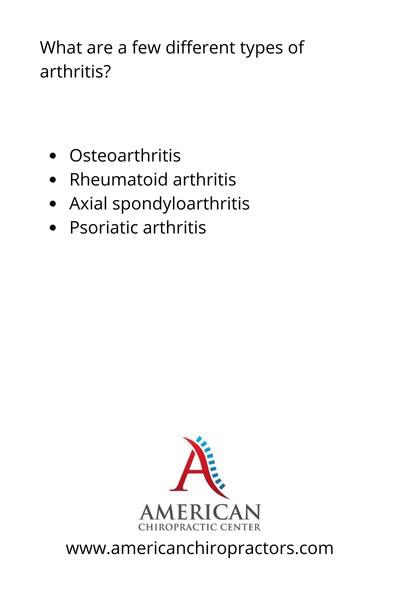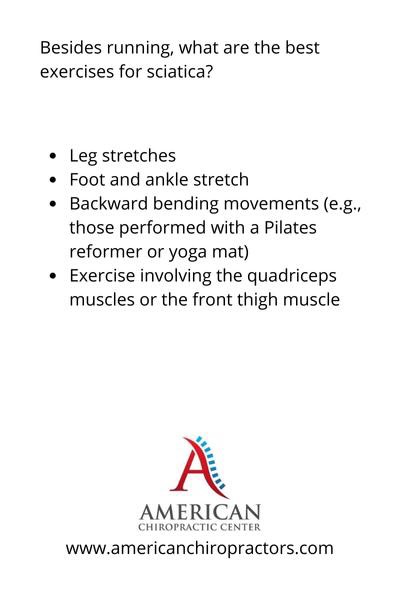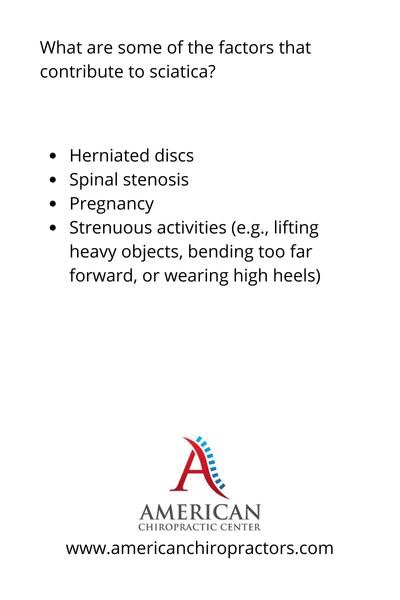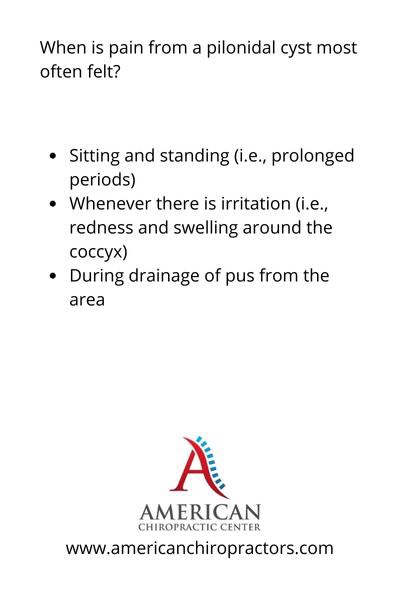Una pregunta común que hacen los pacientes con artritis y ciática es si existe o no una conexión entre las dos condiciones. Si bien es cierto que ambas condiciones pueden causar dolor y malestar, la respuesta a esta pregunta no es tan sencilla.
Lea más sobre ¿La artritis causa ciática?
Más cosas que debe saber sobre si la artritis causa ciática
Echemos un vistazo más de cerca a la relación entre la artritis y la ciática para ver si podemos entender mejor cómo pueden estar conectadas.
¿Existe un vínculo entre la artritis y la ciática?

La respuesta a ésta pregunta es sí; existe un vínculo entre la artritis y la ciática. La osteoartritis, en particular, se ha relacionado con el dolor ciático debido a la inflamación de las articulaciones facetarias. Esto provoca el estrechamiento de los nervios ubicados en la columna vertebral, lo que provoca un dolor agudo que puede viajar por una o ambas piernas, también conocido como ciática.
Además, ciertas formas de artritis inflamatoria (como la espondilitis anquilosante) también se han relacionado con varios niveles de dolor ciático.
Hay varios tipos diferentes de artritis, incluida la osteoartritis, la artritis reumatoide, la espondiloartritis axial y la artritis psoriásica. En la mayoría de los casos, la ciática es el resultado de una hernia de disco, pero la artritis también puede ser una causa.
La columna vertebral y los nervios ciáticos pueden comprimirse si desarrollan artritis. La artritis degenerativa de la columna vertebral puede causar estenosis espinal, una afección en la que los huesos de la columna se degeneran gradualmente. Otra condición que puede causar ciática es la espondilolistesis, una degeneración de las vértebras. La osteoartritis también puede provocar espolones óseos, que pueden presionar contra el nervio ciático.
Si tiene dolor continuo en las articulaciones o síntomas relacionados con la artritis junto con síntomas de tipo ciático, hable con su médico de inmediato para obtener un diagnóstico y tratamiento.
¿Qué tipo de artritis causa dolor en los nervios?
Si tiene dolor en las articulaciones, es posible que tenga artritis. La artritis es una condición común. La hinchazón, la rigidez y el dolor son síntomas comunes de la artritis. También puede afectar su forma de caminar, aumentando la presión sobre otras extremidades. Además, la artritis puede causar daño a los nervios y entumecimiento. Si sufre de dolor intenso, debe buscar ayuda de un médico. El especialista en dolor podrá prescribir un tratamiento adecuado.
La forma más común de artritis es la osteoartritis. Esta condición es el resultado de la descomposición del cartílago en las articulaciones. Puede afectar cualquier articulación, pero es más común en las caderas, las rodillas, las manos y la zona lumbar. La osteoartritis también causa espolones óseos, que presionan los nervios.
¿El dolor de la artritis se irradia hacia abajo de la pierna?
La forma más común de artritis es la osteoartritis, que afecta las articulaciones de la columna vertebral. Esta condición puede causar que el cartílago entre las articulaciones se rompa. Esta degeneración puede causar que el nervio ciático se irrite. También puede dar lugar a espolones óseos, bordes de hueso ligeramente dentados que presionan el nervio ciático. Sin embargo, la mayoría de los pacientes con osteoartritis no experimentan dolor en la pierna.
Otras condiciones también pueden causar dolor de artritis. En algunos casos, la artritis puede ser causada por una afección llamada enfermedad arterial periférica, que se caracteriza por la obstrucción de los vasos sanguíneos. El flujo sanguíneo restringido puede provocar dolor, entumecimiento y debilidad muscular. Una fiebre también puede caracterizar la condición.
¿Cuál es el tipo de artritis más doloroso?
Hay muchos tipos diferentes de artritis. La artrosis es la forma más común y suele afectar a las articulaciones que soportan peso. La afección ocurre con el tiempo y, a menudo, aparece gradualmente, sin fatiga aparente. Es causado por el desgaste del cartílago del amortiguador del cuerpo. El cartílago en los extremos de los huesos se degrada con el tiempo, lo que hace que la articulación esté menos amortiguada.
El dolor asociado con la artritis varía de persona a persona. Puede ser leve o moderado y puede controlarse con medicamentos o ejercicio regular. El dolor a veces puede llegar a ser tan intenso que se vuelve difícil mover la articulación en cuestión.
¿Cómo se trata la ciática?
El tratamiento para la ciática varía ampliamente según su causa y gravedad. Algunos pacientes responden a terapias conservadoras de autocuidado, mientras que otros requieren tratamientos médicos agresivos. En cualquier caso, el objetivo es disminuir el dolor y mejorar la movilidad. Las técnicas de cuidado personal incluyen la aplicación de bolsas de hielo en el área afectada varias veces al día para reducir el dolor y la hinchazón. Las compresas calientes también son efectivas para tratar el dolor de ciática y se pueden aplicar en el área afectada hasta por 20 minutos.
La ciática es una condición dolorosa causada por la inflamación de las raíces del nervio ciático en el punto donde salen de la médula espinal. Esta inflamación puede hacer que el dolor se irradie hasta el pie. Si esta condición no se trata, los síntomas pueden empeorar. Sentarse por períodos prolongados también puede agravar la condición.
¿Qué es el Nervio Ciático?
El nervio ciático es el nervio más largo y grueso del cuerpo (casi el ancho de un dedo). Se compone de cinco raíces nerviosas: dos de la región inferior de la espalda llamada columna lumbar y tres de la sección final de la columna llamada sacro. Este es el síntoma principal de la artritis, en el que la persona tiene dolor en las articulaciones.
Cuando las personas tienen dolor ciático, el 80 % se recuperará en tres meses. Si no se recupera dentro de los tres meses con tratamientos conservadores, es posible que necesite una intervención quirúrgica y los nervios pueden tardar hasta un año en recuperarse.
Cuando las personas tienen dolor ciático, generalmente no es un signo de algo mucho más serio. Una compresión de una parte del nervio ciático cerca del piriforme causa síndrome del piriforme dolor en el músculo piriforme.
Los pacientes que no mejoran con fisioterapia y antiinflamatorios pueden ver una mejoría con una inyección epidural de cortisona. Se pueden recomendar medicamentos antiinflamatorios no esteroideos como ibuprofeno, aspirina o relajantes musculares, así como calor o frío suaves aplicados a los músculos doloridos.
Considerándolo todo
En conclusión, es evidente que las enfermedades inflamatorias debilitantes como la artritis pueden contribuir al desarrollo de la ciática. Es imperativo identificar la causa subyacente de su dolor para establecer un plan de tratamiento efectivo.
Agregar terapias como atención quiropráctica, fisioterapia, ejercicio y estiramiento a su vida diaria puede ayudar a reducir los síntomas asociados con la artritis y la ciática.

Doctor Osvaldo Pepa, Médico del Servicio de Neurocirugía del Hospital San Martín, La Plata, Argentina. Me gradué el pasado 16 de noviembre de 1984 como Médico en la Universidad Nacional de La Plata. El Consejo Médico de La Plata, Distrito 1, me licenció como Neurocirujano en 1990. Tengo Licencia Provincial y Nacional y miembro activo de la Sociedad de Neurocirugía de La Plata, Federación Mundial de Ozonoterapia y Sociedad Interamericana de Cirugía Mínimamente Invasiva. .










